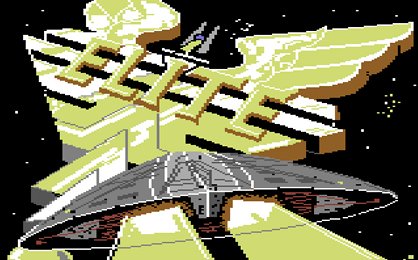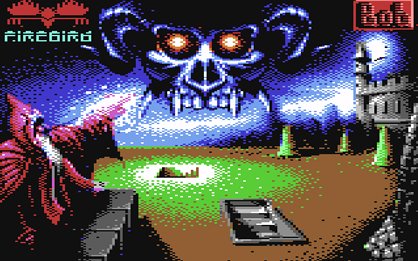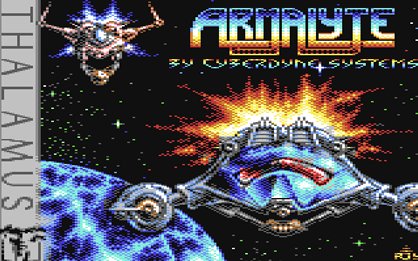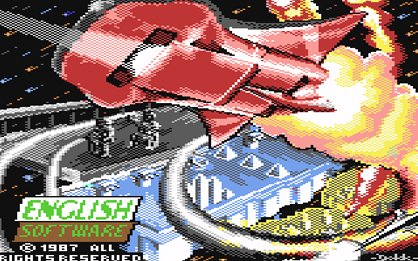A celebration of C64 loading screens
The art of waiting, Commodore style
David Braben
One half of the team that made Elite back in the early 80s. Braben is the founder and big boss of Frontier Developments, makers of the WiiWare's wonderful Lost Winds. Here he offers a little loading screen insight...
In the 8-bit days, loading screens were often one of those last minute things for game development, particularly as many games were written by programmers - most artists would sneer at our glorified pocket calculators. For some games (like the early versions of Elite) the loading screen was often the only large piece of 2D art included in the game - and these would be done by an artist at a publisher - who often weren't terribly familiar with the often horrible restrictions of computer art.

Above: The Elite loading screen from the C64 conversion
On some platforms (like the NES or Spectrum or C64), you could have different colours on the screen, but only a limited number could appear in any one character cell - and on some platforms you could sacrifice resolution for more colours - though getting an artist to work within such restrictions was surprisingly hard. I remember an artist once delivered a piece right at the last minute deadline, but had used five colours for a start-up screen rather than four because "it looked better that way".
Paul Docherty (aka Dokk)
An absolute master C64 artist. Docherty built up a reputation as a talented pixel pusher on Compunet - the Commodore's own mini-internet - and went on to make some of the machine's most memorable loading screens. After we tracked him down, Paul kindly picked out three of his loading screen favourites.

Bob Stevenson's loading screen for Druid blew my mind. I was already a fan of his work from Compunet, but this was something special (to me, at least) - the clean lines and simplicity of the execution paid a far greater tribute to the ad artwork that it was based on than the artwork deserved. Bob opened my eyes to the idea that the artist didn't need to slavishly reproduce but could interpret and refine... obvious now, but a real revelation to me at the time.

Robin Levy's loading screen for Armalyte was a shocker... His intense use of color and his intricate pixel-work invigorated the screen and made watching that single image for the duration a real pleasure. Robin has such a unique style, and this was my introduction to it. A classic.
Sign up to the GamesRadar+ Newsletter
Weekly digests, tales from the communities you love, and more

Sheer myopia forces me to pick one of my own screens. The loading screen for English Software's Leviathan was the first screen I ever did. Clumsy, a bit crude, but the thrill of loading the finished game and seeing my work there was a huge moment for me. Got me hooked. Changed my life really...



